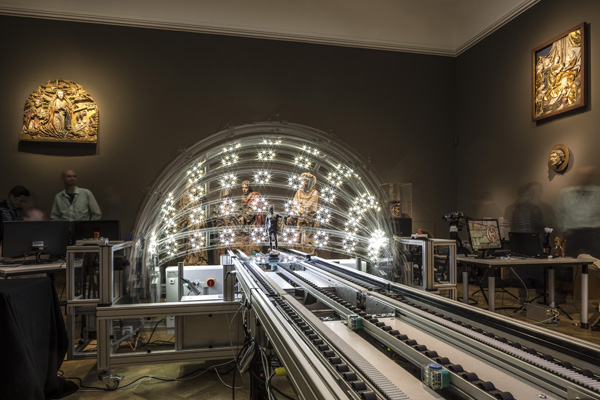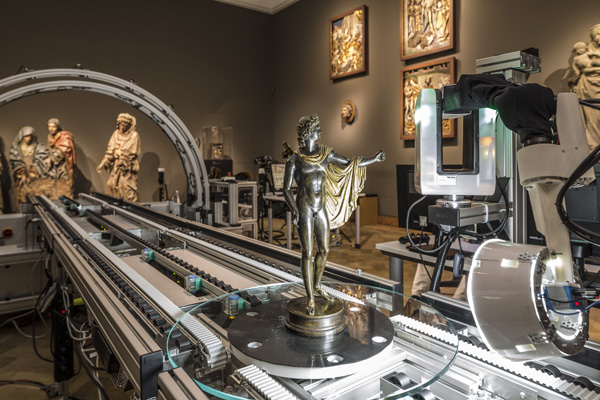Art World
Breakthrough in Virtualization of Museum Collections
Why ship a sculpture when you can scan it?

Why ship a sculpture when you can scan it?

Alexander Forbes

Could the museum of the future be little more than a 3D screen? Researchers moved one step closer to fully digitalizing the world’s art collections on Tuesday, deploying the CultLab3D scanner at Frankfurt’s Liebieghaus Skulpturensammlung to scan Renaissance sculptor Antico a.k.a. Pier Jacopo Alari Bonacolsi’s Apollo Belvedere (1497-1498).
The museum set up the scanner in the main hall of its medieval collections and produced a fully realistic 3D model of the sculpture. The model, which can now be transmitted to classrooms, other museums, and, theoretically, even homes worldwide in seconds, combines over 80 views of the sculpture and realistically recreates the luminosity and textures of Apollo Belvedere‘s surfaces.
Pedro Santos, founder of Fraunhofer IGD, the company which developed the CultLab3D says it is, “The first economic and fast approach to the digitization of cultural artefacts in 3D.” Previous 3D scanning techniques for museum applications required multiple repositionings of the artifact or art work in question to capture individual scans of its surface, a time-intensive process to say the least. For example over a 10 month period in 2013, the Smithsonian only completed the 3D models of 20 of its artifacts.

Fraunhofer IGD’s CultLab3D at the Liebieghaus Skulpturensammlung
Photo: Norbert Miguletz, © Liebieghaus Skulpturensammlung
The CultLab3D takes cues from the assembly line in its scanning process, using a conveyor belt to completely automate the process. The sculpture first passes through a series of so-called scanning arcs, the results of which are processed by the system. It then uses a secondary system of robotic arms to fill in missed areas or portions where greater detail is required. Each scan takes mere minutes, meaning that whole museum sculpture collections could be brought into the digital realm in less time than the Smithsonian’s first 20 artifacts took to process.
Liebieghaus Skulpturensammlung director Max Hollein called the CultLab3D, “an ideal application of high technology in the museum,” which could provide, “ultimate global digital access to art-historical contents and research results.”
But, wider public access isn’t the device’s only major implication, the museum’s head of antiquities Vinzenz Brinkmann suggests. “In cases of damage, an object can be reconstructed down to the smallest detail, or virtually reproduced,” he explains.
While the scanner used in Frankfurt is unique, the company suggests they could be ready to begin producing and marketing further CultLab3D scanners at the beginning of next year.